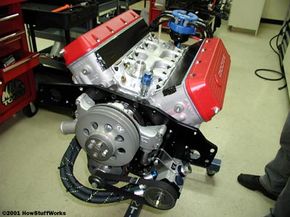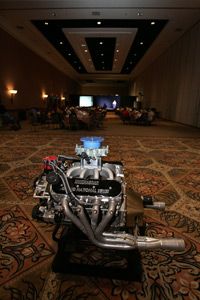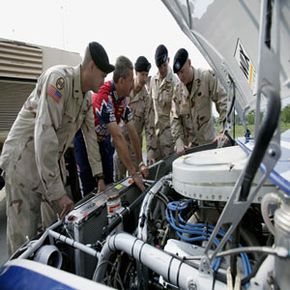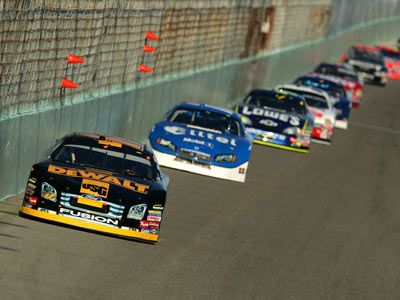From the front air splitter to the rear deck-lid wing, a stock car sports scores of engineering achievements. Ironically, one of the most engineered parts of the car lies hidden from the view of most racing fans. We're talking, of course, about the engine.
Aside from assembling a great crew, one of the most important elements of winning NASCAR races is the ability to build -- or buy -- a monstrously (and reliably) powerful engine. While aerodynamic tweaks and suspension settings can give race teams an edge, just about everyone in NASCAR agrees that the engine is the heart of a race car.
Advertisement
In NASCAR's Sprint Cup Series, those engines are rated at nearly 800 horsepower. Since NASCAR completed its transition to the Car of Tomorrow body style in 2008, engine power has actually increased to about 850 hp. These engines are so powerful that NASCAR forces member teams to restrict horsepower on certain race tracks, fearing that a 200-plus mph crash might send debris hurtling into the grandstands.
But what makes NASCAR engines so special, anyway? Can you simply stuff one beneath the hood of your Monte Carlo and proclaim yourself King of The Road?
This article will take a look at the engines of NASCAR and the vast amounts of effort and money that go into building them. NASCAR engines are expensive. Owners often spend $50,000 or more for a single engine just to be competitive. Spread that out among a fleet of more than a dozen cars, as most successful teams have, and the money adds up pretty quickly.
For their investment, these teams get a finely tuned and engineered piece of equipment that incorporates the most exotic and expensive metal alloys available. These teams may also have one or more engineering PhDs tinkering with the engine to extract every last drop of potential power from it. As you may have already guessed, careful design and extensive testing come standard when creating something as critically important to a stock car as its engine.
By now, you may be wondering, "If everyone else's engines can only muster 800 or 850 horsepower, why wouldn't a team just build one with 900 or even 1,000 horsepower? We'll cover that next.
Advertisement






